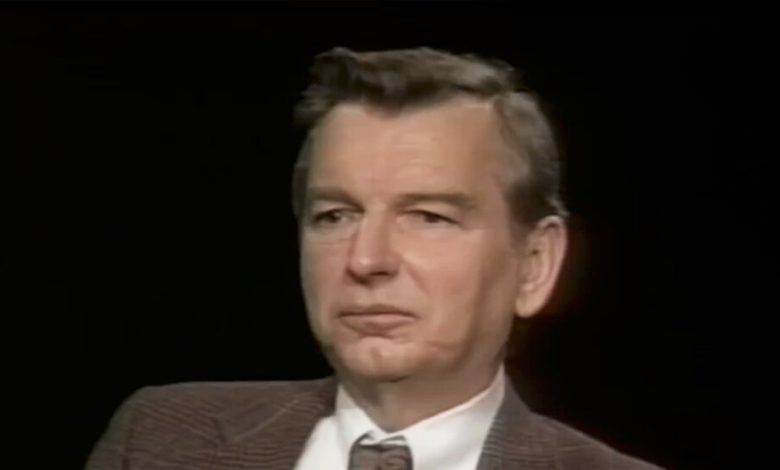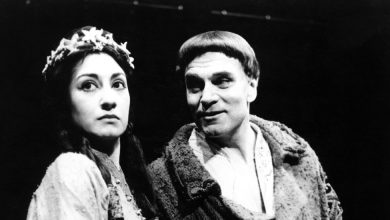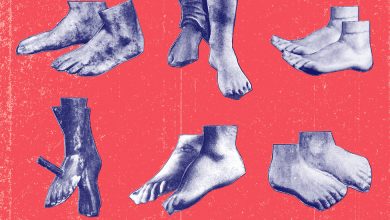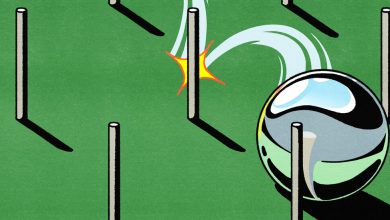John Corry, Former Times Reporter and TV Critic, Dies at 89

John Corry, a former culture news reporter and television critic for The New York Times whose investigative articles helped clear a young man wrongly convicted of killing his mother and disputed plagiarism allegations against the best-selling author Jerzy Kosinski, died on Saturday in his home in Manhattan. He was 89.
Mr. Corry’s daughter Colette Corry Dahlberg confirmed the death.
In 31 years in journalism (1957-1988), nearly all at The Times, Mr. Corry covered the comings and goings of shows and stars on Broadway and wrote the “About New York” column and three books. He also reported on the efforts by Jacqueline and Robert Kennedy to prevent the publication of a William Manchester book on the 1963 assassination of President John F. Kennedy.
In 1966, Mr. Corry broke the news of the Kennedys’ threat to sue Harper & Row to block publication of “The Death of a President” on grounds of breach of contract.
While relying on interviews with the Kennedys, the Manchester book included passages unflattering to Mrs. Kennedy and potentially damaging to Robert Kennedy’s political career. After a settlement, the book was published with minor changes in 1967. Mr. Corry followed with a quickie book of his own, “The Manchester Affair.”
Mr. Corry wrote the first Times articles about the sex studies by William Masters and Virginia Johnson, beginning with their definitive and graphically revelatory best seller, “Human Sexual Response” (1966). In an era of restrictive social conventions, the Corry articles raised issues of taste in a fastidious newspaper whose editors had rarely allowed the publication of sexually explicit language, even in health and science reports.
“Editors struggled with their souls and psyches,” Mr. Corry recalled in a memoir, “My Times: Adventures in the News Trade” (1993) of one such article. “The story shrank, expanded, and then shrank again.” Finally the editors decided to run it as written, except for one word. “Vagina” was acceptable. But “penis” was changed to “male sex organ.” Mr. Corry stifled his anger.
He interrupted his Times career from 1968 to 1971 to work for Harper’s Magazine, whose editor, Willie Morris, had embraced the “New Journalism,” a writing style that uses literary devices of fiction. Tom Wolfe and Norman Mailer were among its exponents, but Mr. Corry was not one of them.
He covered civil rights protests in Mississippi and Alabama — where a Klansman once accosted him with a gun — and traveled to Cuba for the 10th anniversary celebrations of the Communist Revolution and long-winded speeches by Fidel Castro. When Mr. Corry returned to The Times, he was welcomed back with plum assignments.
In 1971, he began a year of reporting on the residents of a single block — on West 85th Street between Central Park West and Columbus Avenue — for a series, “City Block,” that detailed what it was like to live in New York. And from 1973 to 1976, he wrote the “About New York” column twice a week, a potpourri of tales about the city, including on the easiest ways to get mugged.
But he was perhaps best remembered for his inquiry to free a young man from prison in a matricide case, starting with only the suspicions of the playwright Arthur Miller, who lived a few miles from the crime scene. “He said he thought that Peter Reilly could have murdered his mother, but he wondered how he could have done it without getting blood on his clothes,” Mr. Corry wrote in 1975. “The playwright said it bothered him.”
By then, the case was two years cold. Mr. Reilly had been convicted of killing his mother,Barbara Gibbons, in their Canaan, Conn., home on Sept. 28, 1973, though he insisted he had returned from a church meeting and found her body on the floor, the victim of a ferocious attack. Her head had been nearly severed, she had been stabbed repeatedly and both her legs and some ribs had been broken.
Under all-night grilling by state police detectives, he confessed, though he recanted the next day. Ambiguities filled the trial — about Mr. Reilly’s movements on the night of the killing, the absence of a weapon or bloodstains on his clothing, and the timing of calls he made after finding the body.
A jury convicted him of manslaughter, and he was sentenced to six to 16 years in prison. The case was largely forgotten until Mr. Miller approached Mr. Corry, whose investigation found a crucial time discrepancy. A priest said Mr. Reilly had left the church at 9:40 p.m. for a six-mile drive home. His first call after finding the body, to a doctor, was received at 9:52 p.m.
A judge ruled that there could not have been enough time for Mr. Reilly to commit the murder and dispose of all the bloody evidence before the police arrived at 10:02 p.m. The charges were dropped, and Mr. Reilly was released. No one else was ever caught.
Another Corry investigation was set off by a 1982 literary dispute over the authenticity of books by Mr. Kosinski, a Polish-born novelist. After a Times Magazine piece by Barbara Gelb detailed his early life under Nazi and Communist governments in Poland and his American writing successes, The Village Voice published its own story. The paper alleged that he was a plagiarist in the pay of the C.I.A., that his plots had been stolen from Polish novels unknown in America and that hired “editors” had ghostwritten his books.
Mr. Corry responded with a 6,000-word article in the Arts and Leisure section, defending Mr. Kosinski. Mr. Corry contended that the allegations of plagiarism and of other nefarious activities were the product of a 15-year disinformation campaign by Polish Communist intelligence operatives, resulting from the novelist’s denunciations of Polish authorities for crushing the Solidarity movement.
Partisan literary voices lined up on both sides of the dispute, which widened into allegations that powerful journalists had exerted influence in the polemics, and the matter was never resolved. Mr. Kosinski committed suicide in 1991.
In the 1980s, Mr. Corry became The Times’s first television critic. He liked PBS documentaries on the Three Mile Island nuclear accident and on terrorism, but he panned network news. “CBS did not understand news and confused it with entertainment,” he said in his memoir. “NBC and ABC were doing that too. News increasingly was being recited or acted out by on-air Kens and Barbies.”
John Corry was born in Brooklyn on Jan. 6, 1933, to John Joseph and Agnes (Thune) Corry, Irish Episcopalians whose forebears had changed the surname from Curry to stress their Protestant origins. His father was a bank clerk. The boy grew up in the Bay Ridge section and attended P.S. 127 and Fort Hamilton High School, graduating in 1950.
He graduated in 1954 from Hope College, a small liberal arts school in Holland, Mich. After two years in the Army, he was hired by The Times as a copy boy in 1957.
In 1960, he married Irmtraut (Irmie) Wolff. They had two children, Colette and Janet, and were divorced in the 1970s. His second marriage, in 1982 to Sonia Landau, a Republican Party official, also ended in divorce. In 1996, he married Jean Herskovits, a professor of Nigerian history and politics, who had an adopted daughter, Fatima Nduka-Eze. His third wife died in 2019.
Besides Ms. Dahlberg and Ms. Nduka-Eze, he is survived by his other daughter, Janet Farnsworth, and six grandchildren.
Mr. Corry’s book, “Golden Clan: The Murrays, the McDonnells and the Irish American Aristocracy” (1977), chronicled generations of Irish American families.
After retiring from The Times in 1988, Mr. Corry joined the Gannett Center for Media Studies at Columbia University, and for years he wrote occasional articles for the conservative journal The American Spectator.





